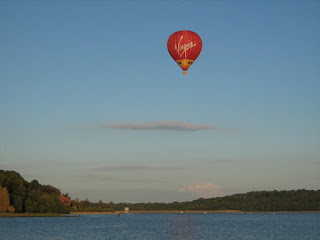Most of us
have a favoured arm when it comes to casting.
In reality a lot of single handed rod fishers only have one “casting”
arm. However, there are many reasons
why it is a good idea to be able to cast with both arms. Let me review them:-
·
You have flown abroad on a fishing trip and on
taking your suitcase out of the taxi you sprain the wrist of your casting
arm. Disaster! However, if you can switch arms for casting
you could prevent the holiday being a total failure.
·
A strong wind is blowing the fly behind you on
the back cast and you run the risk of imbedding the fly or heavy lure in the
back of your head on the forward cast.
Being able to change casting arms means that the wind is now blowing the
fly away from you on the back cast. You
are safer and don’t have to keep ducking or resorting to casting across your
body or forward casting away from the water and laying the line on the water
using the back cast!
·
Being able to cast left-handed means that in an
adverse strong wind you can move away from all the right-handed fishers and
fish a location that is less disturbed, catch more fish and leave them green
with envy!
·
When sharing a boat with a companion, ghillie or
guide you can cast with an arm that takes the fly over the water and not over
the boat occupants. I find fewer
apologies are required!
·
When teaching your left-handed pal, you can hold
the rod the same way they are.
·
Particularly when river fishing, being able to
cast with both arms means you can handle dealing with obstacles and the wind better. Also, you can cover both sides of the river
more comfortably.
·
When the fishing is a little too easy (yes, that
has been known to happen) and (say) you are on a four fish ticket/limit, having
caught the first brace fairly quickly you can make it a little harder by
switching rod arms.
·
When your favoured casting arm feels like it is
about to fall off (often a sign of poor casting technique) you have a fresh arm in
reserve.
Now learning
to cast with the other arm is almost as difficult as learning to cast with your
usual arm but all it needs is practice. The
best way, I am told, is to get two identical rod and line setups and practice
the overhead cast action with both rods simultaneously. You don’t even have to be casting on water, casting
on short grass can be fine. Now when my
wife reads this she will know why I keep our lawn nice and short! When fishing, a good time to practice is when
the fish are having their afternoon siesta.
At that time, you probably don’t want to pack up and go home because you
are anticipating the evening rise, so to usefully use the time, have a casting
practice session. I also favour having my own “siesta” as when I
get tired even my good casting can end up as aerial knitting!
So rise to
the challenge, be brave and let’s see you becoming ambidextrous and more able
to conquer the conditions and land more fish!
Wow! I surprised myself with that line.
Am starting to sound like Joan Wolff?


































